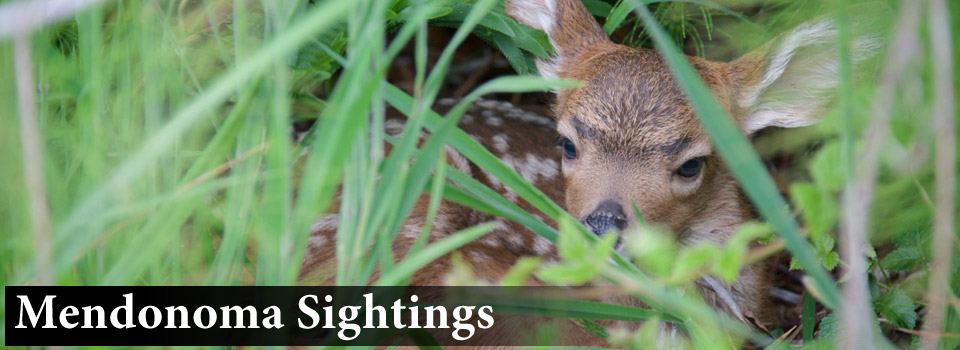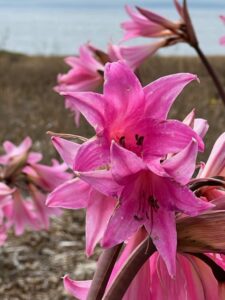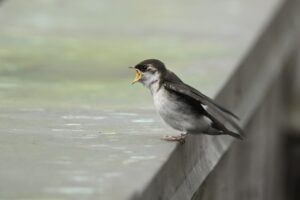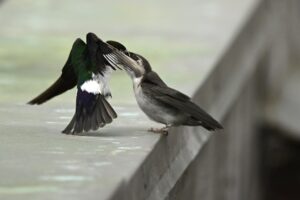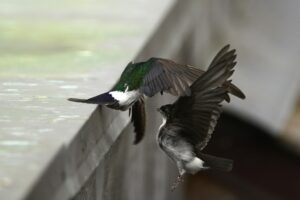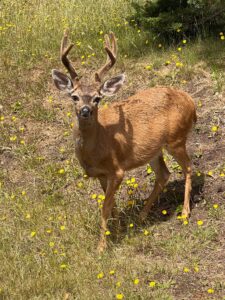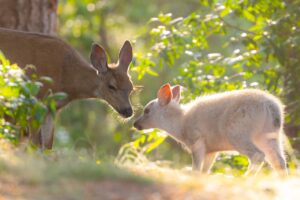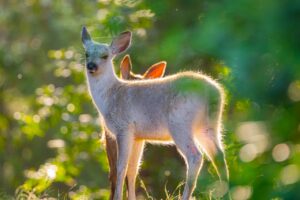Janet Flink wrote, "I have participated with Bonney Ely for the last three years in Snapshot Cal Coast, which is an annual project through the California Academy of Sciences. Here is a link to their explanation of this event. https://www.calacademy.org/calcoast
"This year we went to four local beaches during the lowest tides of the year to gather data and take photos of their “most wanted species” and any other species we found interesting or rare. I focus on invertebrates and algae. I post the photos and data to iNaturalist for verification by other experts. These “BioBlitzes” help contribute to the knowledge of ranges of different species and especially any non-native or invasive species."
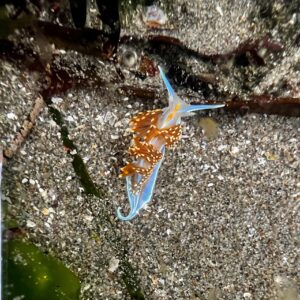
"The first is Hermissenda crassicornis, a gorgeous Nudibranch, about two inches long and found in a tide pool at Shell Beach. This “sea slug” breathes through the feathery gills on its back, and has a very soft body. It’s not common on our rocky shores, due to the heavy wave action."
This nudibranch's common name is Thick-horned Nudibranch. fyi, nudibranch is pronounced "nudibrank," Why? I dunno. Back to Janet's great sightings.
She wrote, "The second is our locally common sea star, Pisaser ochraceus, from Black Point Beach. I just found the voluptuous pose of this one to be comical!"
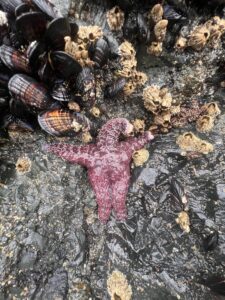
These Stars, which come in various colors, are called Ochre Sea Stars. They used to be called Starfish, but they aren't fish!
Janet continues, "The third photo, taken last year at Shell beach depicts two stunningly beautiful pastel-colored Aggregating Anemones (Anthopleura elegantissima) from different colonies fighting for territory underwater."
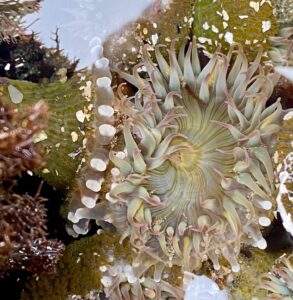
"They do this with special club-like white tipped tentacles that shoot barbs at the enemy. You can see the white clubs of the individual on the left, which has turned itself sideways, attacking the one on the right, which looks as if it is cowering and pulling away even as it’s beginning to brandish it’s own clubs. Toward the bottom of the sideways one, you can see a club from the one on the right“landing a punch”!"
How amazing to see and learn more about these fascinating inhabitants of the intertidal zone. Thanks to Janet for allowing me to share her photos with you here.
Another toasty warm day, with high clouds streaming in. In Point Arena yesterday, those closer to the ocean never saw the sun, but today the sun broke through the fog mid-morning.
